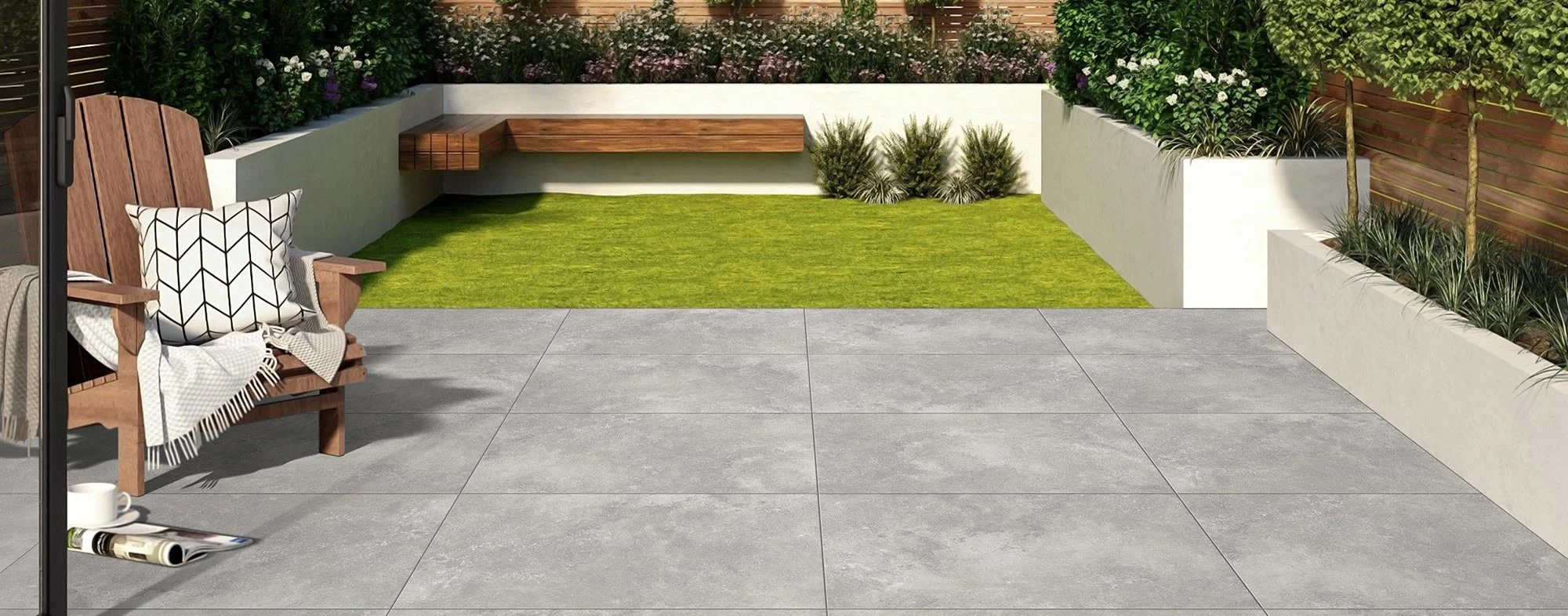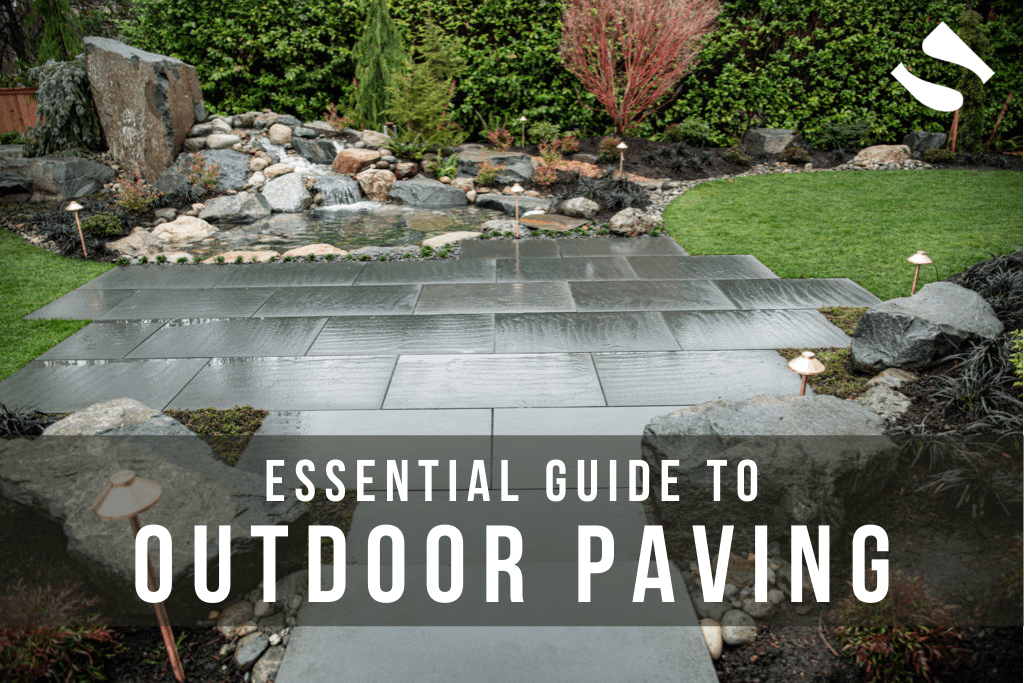Paving nowadays has become a mainstream and widespread practice in every home because of the benefits it provides. Whether it is for creating a pathway for a muddy part at your property, building swimming pools, patios, or even in bathrooms, paving has become a preferred choice.
If you are looking to pave your property, it makes sense to know essentials about different types of paving, colours, stones, and slabs to use and choosing the right indoor or outdoor paving slabs. In this quick yet comprehensive guide, we have everything covered for you.
What is Paving?
Paving is the process of using flat stones in a pattern to build a solid surface. The stones, tiles, or slabs used for paving can be different depending on the purpose and placement.
For instance, if you are looking to create a patio in the backyard of your property, you can choose outdoor paving tiles.
Common Use Cases of Paving Stones
Paving can be done for many parts of a property, especially the outdoors. Following are the most common places where paving is done:
- Walkways
- Patios
- Driveways
- Pool decks
- Backyard
- Fire pits
Different Types of Paving Stones and Slabs
There are several types of outdoor paving slabs and stones available in the market. The durability, resistance, cost, etc. are different for each type of stone. Also, some stones are well suited for specific purposes. Let’s know about the paving stones used commonly for outdoor flooring.
-
Limestone
Limestone is made up of natural sedimentary rock and is considered an ideal choice for outdoor paving. It has a smooth finish and texture. The pros of using limestone are that it is available in multiple colours and can be used for almost all purposes. The endurance and durability are also good to survive different kinds of weather conditions.
-
Sandstone
Sandstone is the easiest paving stone to work with. It has great surface finishing and can be found easily in the market. Mostly imported from India, sandstones are made up of silicon. It also has varied colours and good endurance. However, the colours may fade in high temperatures and direct sunlight for a longer duration. It is one of the most economical outdoor flooring stone options.
-
Granite
Granite is preferred for its durability and toughness. The cost of this stone is comparatively higher because of its abilities like no water retention, high endurance, and multiple colours availability that doesn’t fade under sunlight. People prefer it the most for outdoor patio flooring.
-
Porcelain
Porcelain is an artificial stone made up of clay. The main properties of porcelain are that it doesn’t get scratched easily, withstand high pressure, is non-porous, and can be built in different designs and patterns. It is an expensive option because of a wide variety of colour availability, styles, elegance, and durability. But for those looking for natural stone flooring, it is not the stone to go with.
-
Cobblestone
It is also a natural stone that is mostly used for driveways and tough pathways. It provides an old-world look & feel. In street areas or driveways where the paving needs to be tough and durable to sustain high pressure, it is one of the best choices.
Outdoor Paving Stone Colours
Most of the paving stones are available in varied colours to meet your home’s colour scheme. You should be selective and smart here so that the flooring looks elegant and enhances the overall outdoor appeal. Below is the list of common colours available:
- Brown
- Yellow
- Sand
- Tan
- Siege
- Red
- Black
- Charcoal
- Gray
- Violet
- Terra cotta
- Green
The colours of natural stones have different shades, whereas artificial stones can have the exact colours you want. While choosing outdoor paving stone colours, you should consider several things.
Ask whether the colour will blend in with your home’s current colour scheme, how many colours to go with, will the colours of the stone fade, whether to select light or dark colours, etc?
Paving Cleaning and Maintenance
Paving doesn’t require much maintenance, but the duration of maintenance is different for the type of slabs chosen. If you take good care, it lasts for years.
For cleaning, you can use soapy water and a scrubber or brush to keep the slabs in good condition. Regular cleaning also improves the lifespan of the paving.
Avoid the use of chemical-based products and acids for cleaning because it hampers the slabs and reduces their life span. Another thing that matters is to use highly redundant stones or slabs if the area faces high pressure, heavyweight, and different environmental conditions.
-
Drainage
Drainage matters, it is because you would want the water to flow in the direction of the outlets. The surface should have a minimum of 150 mm damp course level. If it is not taken care of, the water will stay on the floor for a longer duration, which can impact the slabs that don’t retain water.
-
Size and shape
The size and shape of the area to be paved should be considered while choosing the outdoor paving slabs or stones. For instance, it would be better to install long slabs for paving a long pathway to reduce the time and cost of installation. For small patios, you can go with small slabs to make the area look bigger.
-
Grass poisoning
If you want to pave your garden area by replacing some grass, then it would be better to poison the grass in that area. Do this at least two weeks before paving so that the grass doesn’t grow again and emerge from between slabs.
-
Safety first
Safety must be your top priority. If you are doing it yourself, make sure to wear some eye protection or glasses while cutting stones. Cover the ears when sawing bricks. During lifting and placing the heavy stones, bend your knees instead of picking them up while standing.
Wear hard shoes or boots to avoid injury to the legs and toes (in case the stones fall). In hands, wear gloves for protection. To avoid inhaling the dust when the stones are being cut or chiselled, wear a mask or cotton clothes to cover the nose and mouth.
Wrapping Up
Aforementioned are the things that matter the most if you are looking to pave your property. Deciding on the type of stone, colour scheme, size and shape, drainage, maintenance and cleaning, safety measures, etc. should be considered first. It will make the end result worth the cost and effort.




